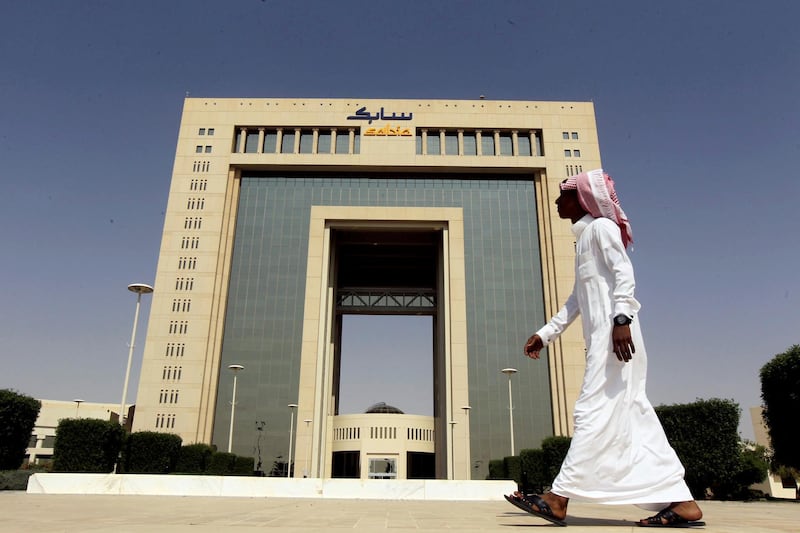The biggest petrochemical producer in the Middle East, Saudi Basic Industries (Sabic), posted a 5.4 per cent increase in third-quarter net profit due to higher average selling prices and an increase in sales volumes, beating analysts’ estimates.
Net profit after zakat and tax increased to 6.1 billion Saudi riyals (Dh5.97bn) from 5.8bn riyals in the year earlier period, the company said in a statement to the Saudi stock exchange, where its shares are traded.
Six analysts polled by Bloomberg forecast a median estimate of 6.08bn riyals for the period.
Revenue in the third quarter grew 13 per cent to 43.7bn riyals from the year earlier period.
“The increase in net income is attributable to higher average selling prices and increase in sales volumes,” the company said.
Saudi Aramco, the world’s biggest oil producing company, is currently in talks with the country’s sovereign wealth fund, the Public Investment Fund, to buy its 70 per cent stake in Sabic, the country’s biggest listed company. Japan's largest bank MUFG has placed the value of acquiring a Sabic stake at about $70bn, establishing Aramco as a “strong downstream entity” with considerable implications for the petchems space and upcoming projects.
Saudi Arabia and Sabic are currently undertaking a study on a $20bn oil-to-chemicals project to be built in the kingdom.
_____________
Read more:
[ Sabic signs agreement for large petchems complex in China ]
[ Aramco-Sabic deal to spur consolidation in regional petchems ]
_____________
Sabic benefited from an increase in petrochemical prices, which are linked to crude oil prices that rose to a four-year high last month.
Prices of polypropylene and polyethylene grew 16 per cent and 15.8 per cent respectively during the quarter, said Iyad Ghulam, an analyst with NCB Capital. The company also benefited from higher urea prices which increased 33 per cent year-on-year during the period.
“In general, Sabic profitability has been strong in 2018. The main drivers are higher prices, spreads expansions and improvement in the performance of metals and fertilisers segments,” he said. “In 2019, we expect a net income of 23.4bn riyals driven mainly by higher operating rates which will mitigate the impact of lower spreads.”
Overall petchem producers are beefing up their production as national oil companies in the region fine-tune plans to generate more value from their crude grades.
Petchems contributed about $43.8bn (Dh161bn) to GCC economies in 2016 alone, according to the Gulf Petrochemicals and Chemicals Association, the sector's regional representative body.
“Our first look shows that the company’s production is stable and costs are under control,” said Al Rajhi Capital in a note. “The company saw its cost of goods sold increasing by lower than our expectation, likely because of cost restructuring.”
Sabic’s share price is up more than 25 per cent so far this year as oil prices surged and the Saudi exchange benefited from foreign inflows after the upgrade of the stock market to emerging market status.
“Sabic should benefit from Tadawul’s inclusion in the MSCI Emerging Market Index,” said Nitin Garg, an analyst with Sico Bank in Bahrain. “A global petrochemicals leader, the company remains a core holding in the Saudi Index, and would merit a place in global funds.”





